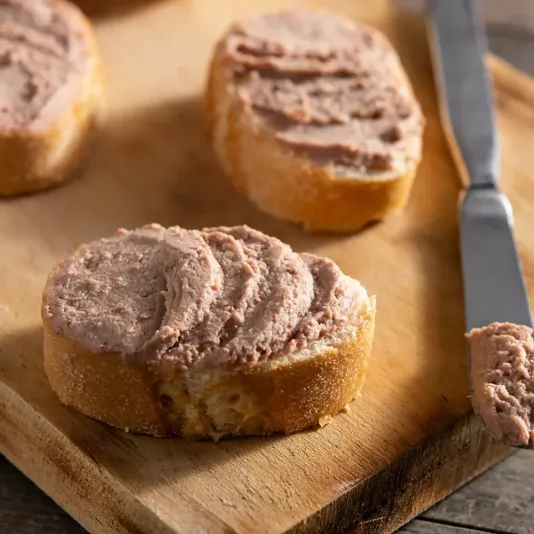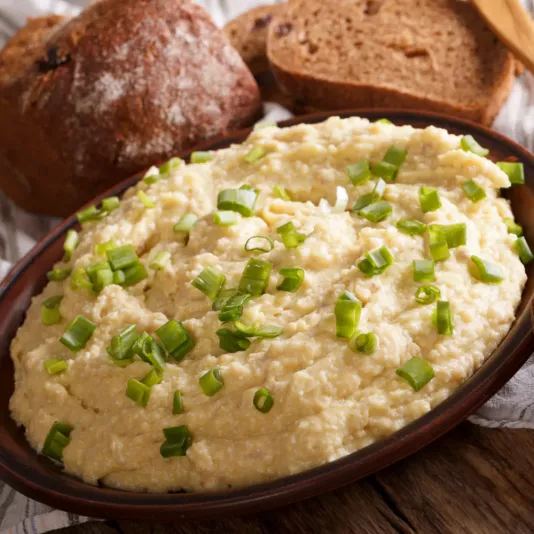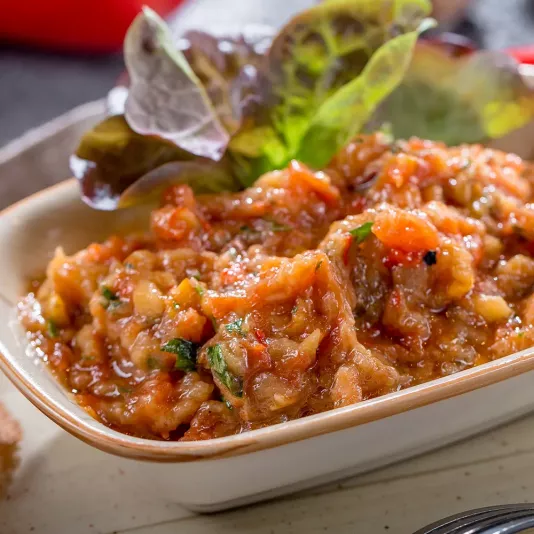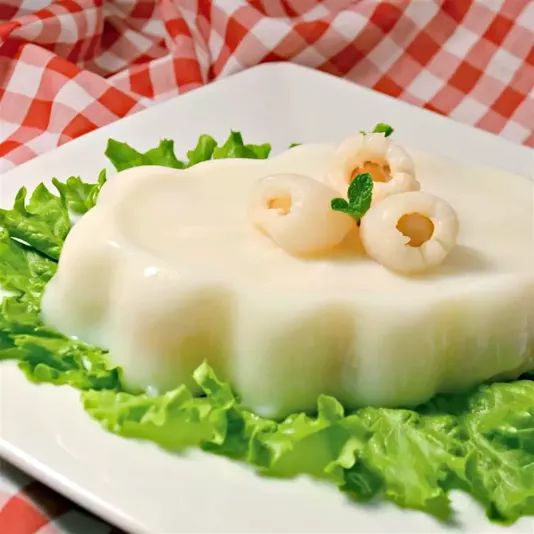Appetizers
Appetizers have always been the part of the table where I could express the most creativity. Over years of cooking, I’ve learned that a good appetizer starts with an idea, not a recipe. First, I decide what role it will play – to refresh, to nourish, or to surprise. Then I think about textures: crunchy and soft, salty and delicate. For example, if I prepare a fish platter, I always add a lemon sauce to balance the fattiness. If I plan vegetable rolls, I make sure the vegetables are firm but not raw, as overly soft ones lose their shape. It’s also important to consider temperature: cold appetizers should rest in the refrigerator for at least an hour so the flavors can meld. And one more rule – serve them on chilled plates, which helps preserve their appearance longer. For me, appetizers are the art of creating harmony from simple ingredients, adding festivity even to an ordinary lunch.
Appetizer Recipes
I’ve always believed that each appetizer should have its own character – some set the mood, others awaken the appetite, and some simply keep company at the table. In my experience, a good selection begins with three elements: a light vegetable base, a protein component, and something bright for flavor. For instance, canapés with pâté pair well with crispy cucumber and a touch of mustard. I’ve found that even the best ingredients can lose their appeal if the proportions are wrong – too much sauce or salt. That’s why I always advise tasting each component separately to check the balance. Appetizers are not just food; they are a way to express the culture of hospitality. They should leave a light sense of satisfaction, not fullness. The right presentation, clean flavors, and attention to detail make them an essential part of any feast.
Classic Cold Appetizers
Cold appetizers, to me, are the foundation of any festive table. They’re prepared in advance, allowing me to focus on other dishes during the event itself. Over years of cooking, I’ve noticed that the success of such appetizers depends on three things: proper chilling, quality ingredients, and good presentation. If a dish contains mayonnaise or cream, I always let it sit for at least an hour so the flavors can blend. For meat platters, slice thickness is key: too thin and they dry out quickly, too thick and they look coarse. I like to marinate vegetable appetizers with a little oil and lemon juice – it refreshes the flavor and extends shelf life. Special attention should be given to serving: clean lines, chilled plates, greens for accents. These details create a sense of thoughtfulness and care. I always say that a cold appetizer is a reflection of a host’s discipline – there’s no room for chance here.
Hot Appetizers for the Festive Table
Hot appetizers have a special atmosphere – they combine heartiness with the warmth of a home meal. In my practice, the most successful dishes are those that can be prepared in advance and simply reheated or baked before serving. For example, stuffed mushrooms, tiny pancakes with filling, or baked bacon rolls. The key here is not to overcook. I always keep the temperature between 180-190°C (356-374°F), as higher heat quickly dries out the surface. Another nuance is sauces. If I plan to bake a dish with a creamy or cheesy sauce, I add it only in the final minutes so it doesn’t separate. A hot appetizer should retain its juiciness, so after removing it from the oven, I let it rest for a few minutes to even out the temperature. This short rest deepens the flavor and softens the texture. And although such dishes require more attention, their reward always justifies the effort.
Vegetable Appetizers as a Light Alternative
With age, I find myself turning more often to vegetable appetizers – they’re light, varied, and pair well with other dishes. I especially value seasonal produce: eggplant and peppers in autumn, beetroot in winter, young cabbage in spring. Vegetables have their rhythm, and if you feel it, the result will be wonderful. For example, I always cool roasted vegetables before dressing them with oil so the flavor remains fresh. For raw salads, proper slicing is key: the thinner the pieces, the more harmoniously they combine. I often add a touch of acidity – lemon juice or apple vinegar – to emphasize the natural taste. Another secret is not to store ready vegetable appetizers for more than a day, as they quickly lose texture. Such dishes are a kind of rest for the body and a way to make the table brighter without heaviness.
Cheese and Meat Appetizers
Cheese and meat appetizers are timeless classics that always work. Over the years, I’ve learned to combine them so that every bite plays its part. For instance, soft cheese complements spicy sausages, while hard varieties contrast beautifully with sweet fruits or honey. The main thing in meat appetizers is product quality. I never use overly salty items, as they overpower other flavors. At home, it’s most convenient to make ham rolls or bake small pieces of meat that can later be sliced thinly. If I want to make a dish more interesting, I add pickled elements – onions, capers, pickles. It’s important to remember the serving temperature: cheese tastes best at room temperature, while meat is better slightly chilled. This creates a balance of textures and aromas. And above all – don’t overload the plate, because the true flavor of an appetizer unfolds in simplicity.
Secrets of Serving and Storing Appetizers
I always say that even the most delicious appetizer loses its charm if served carelessly. For me, presentation is the finishing touch that shapes the overall impression. I use different levels of dishes to create volume: low plates for salads, tall glasses for pâtés or mousses, wooden boards for platters. Colors matter too: white plates highlight the brightness of ingredients, while dark ones add depth. As for storage, each appetizer has its own timing. Fish or meat dishes shouldn’t be kept for more than a day, vegetable ones up to two days, cheese-based ones up to three. I always store them in airtight containers to prevent aromas from mixing. Before serving, I take them out 15-20 minutes in advance so they reach the right temperature. This helps the flavor open fully and keeps the texture natural. A well-presented appetizer is not just about aesthetics – it’s also a sign of respect for the guests.









